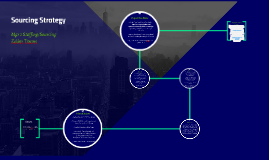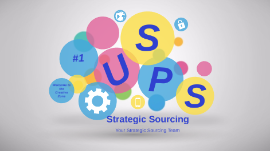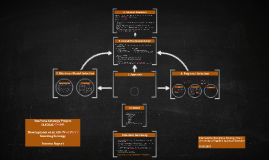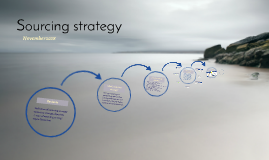Sourcing Strategy
Transcript: Quality and Reliability Assessing quality and reliability is essential; a product that boasts superior quality may incur higher upfront costs but result in lower ongoing expenses and risks. Reliability reduces the likelihood of costly repairs or replacements. Evaluate Long-Term Costs Long-term costs encompass all expenses associated with a project. These include maintenance, operational costs, and potential downtime. A higher initial investment can sometimes be justified if it leads to reduced overall expenditures over the project’s lifespan. Total Cost of Ownership (TCO) Understanding Total Cost of Ownership (TCO) is crucial for evaluating long-term project expenses beyond initial pricing, factoring in maintenance, operational costs, and potential downtime. Research Industry Pricing Researching published reports and surveys allows organizations to gauge pricing trends observably. These insights can be instrumental in determining competitive pricing even when direct competitors are absent. Use Benchmarking Services Market Analysis Sourcing Strategy: Direct Engagement Third-party benchmarking services provide thorough analyses of industry-specific pricing. These services offer comparative insights and help organizations understand their pricing position relative to competitors, ultimately guiding cost negotiations. Engage Industry Experts Industry experts possess comprehensive knowledge of market trends and pricing structures. Their insights help identify fair pricing benchmarks and potential risks, enabling more informed negotiation strategies and risk management in sourcing projects. Understand Pricing Drivers Expert Consultation Expert consultation is essential for obtaining an informed perspective on pricing fairness and market dynamics. Engaging with industry professionals can provide valuable insights that improve decision-making in sourcing strategies. Effective market analysis is crucial for benchmarking costs in sourcing strategies, revealing industry pricing trends and the factors influencing these prices. Identifying key pricing drivers, such as supply chain dynamics and regulatory costs, enables better understanding of what influences industry prices. Recognizing these factors assists organizations in justifying costs during negotiations. Benchmarking Cost to Ensure Fair Pricing and Value Build a Business Case Payment Structures Compiling research, analyses, and expert opinions into a comprehensive business case supports negotiations for fair pricing. Presenting a value argument clearly articulates the rationale behind cost expectations, enabling stronger discussions with suppliers. Negotiating flexible payment terms linked to performance can mitigate upfront costs and encourage supplier accountability. Incentives for volume discounts or early payments can further reduce overall project costs while fostering a beneficial relationship with suppliers. Performance Metrics Analyze performance data, such as delivery times, defect rates, and customer satisfaction scores, to evaluate if the supplier meets or exceeds expectations. These metrics provide concrete evidence of reliability and effectiveness, essential for justifying the investment. Continuous Monitoring Seek Peer Feedback Feature Comparison Post-project reviews help analyze actual performance against initial expectations, refining the understanding of fair pricing for future negotiations. Establishing a routine for evaluating supplier performance ensures ongoing accountability and alignment with defined objectives. Networking with professionals who have undertaken similar projects offers valuable insights into pricing expectations and supplier performance. Joining industry groups or forums facilitates discussions around effective sourcing strategies and challenges faced by peers. Compare a supplier’s features against industry standards and competitive offerings. This evaluation helps identify unique benefits and ensures that the offering provides adequate value given its pricing. Key elements to assess include functionality, support, and scalability. Value Proposition Assessment Scenario Planning Evaluating the value proposition of a supplier's offerings involves comparing features and analyzing performance metrics to ensure they justify the associated costs. Scenario planning allows organizations to assess how changes in project scope or market conditions impact costs and overall value. Conducting risk assessments and sensitivity analysis prepares stakeholders for potential financial variations during the project's lifecycle. Cost Breakdown Request Cost Transparency and Analysis Requesting a detailed breakdown of costs from the supplier illuminates the price structure and aligns it with industry standards. Analyzing each component, such as materials and labor, can uncover potential areas of inflated costs and promote transparency in pricing. Understanding cost transparency and conducting thorough analysis are critical for ensuring fair

















